Themed collection #MyFirstJMCA

A review of silicon oxycarbide ceramics as next generation anode materials for lithium-ion batteries and other electrochemical applications
The present review outlines a comprehensive overview of the research on silicon oxycarbide (SiOC) materials, which are synthesized by various synthetic routes and are investigated as alternatives to crystalline silicon anodes.
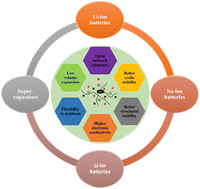
J. Mater. Chem. A, 2023,11, 20324-20348
https://doi.org/10.1039/D3TA01366A
Uncovering the photoelectronic/catalytic property modulation and applications of 2D MoS2: from the perspective of constructing heterogeneous interfaces
2D polyphase molybdenum disulfide (MoS2) has become a popular material for energy conversion and interdisciplinary applications.

J. Mater. Chem. A, 2023,11, 19736-19763
https://doi.org/10.1039/D3TA03441K
Recent advances in MXenes: a future of nanotechnologies
Two-dimensional (2D) materials are amongst the most interesting scientific research materials in the twenty-first century.

J. Mater. Chem. A, 2023,11, 19764-19811
https://doi.org/10.1039/D3TA03069E
Behind the gas sensors: revealing sensing mechanisms with advanced magnetic resonance technology
In this work, we reviewed the progress of magnetic resonance in gas sensing, by providing advancements in magnetic resonance-based techniques for investigating gas sensors, encompassing the determination of the structure of sensing materials and the elucidation of sensing mechanisms.
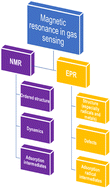
J. Mater. Chem. A, 2023,11, 19281-19297
https://doi.org/10.1039/D3TA03686C
Triboelectric nanogenerator assisted synthesis and detection of chemical compounds
This article comprehensively reviews the recent progress in chemical compound synthesis and detection using triboelectric nanogenerators (TENGs). Current limitations and challenges important for future development in these fields were also addressed.
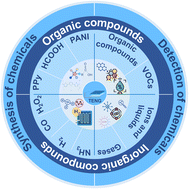
J. Mater. Chem. A, 2023,11, 19244-19280
https://doi.org/10.1039/D3TA03572G
Intermediates and their conversion into highly selective multicarbons in photo/electrocatalytic CO2 reduction reactions
Reactive intermediates and their transformations in photocatalytic and electrocatalytic CO2 reduction are reviewed to get highly selective multicarbon production.
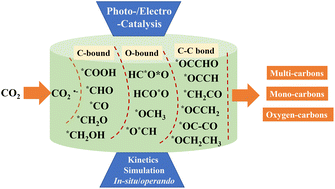
J. Mater. Chem. A, 2023,11, 19172-19194
https://doi.org/10.1039/D3TA01712E
PEDOT:PSS materials for optoelectronics, thermoelectrics, and flexible and stretchable electronics
Cutting-edge approaches to prepare PEDOT:PSS films/electrodes, significant progress on related devices are summarized; advantages, plausible questions, challenges, and suggestions are also presented for the continued development of modern electronics.
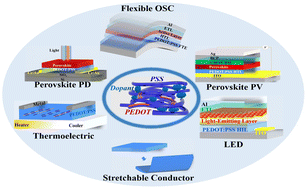
J. Mater. Chem. A, 2023,11, 18561-18591
https://doi.org/10.1039/D3TA03213B
Selective CO2 hydrogenation over zeolite-based catalysts for targeted high-value products
Zeolites-based catalysts play a vital role in selectively producing methane, CO, methanol, ethanol, dimethyl ether, C2–C4 olefins, aromatics, and C5+ hydrocarbons during CO2 hydrogenation.

J. Mater. Chem. A, 2023,11, 17938-17960
https://doi.org/10.1039/D3TA03150K
Advanced nanostructured materials in solar interfacial steam generation and desalination against pathogens: combatting microbial-contaminants in water – a critical review
Application of solar steam generation and solar stills against pathogens (bacteria, viruses, protozoa, fungi, antimicrobial resistance) via different mechanisms such as ROS, temperature, UV, surface engineering and contact by nanomaterial highlighted.

J. Mater. Chem. A, 2023,11, 18046-18080
https://doi.org/10.1039/D3TA03343K
Thermodynamics of calcined clays used in cementitious binders: origin to service life considerations
The use of modeling tools can signifcantly speed up the adoption of sustainable construction materials.

J. Mater. Chem. A, 2023,11, 17920-17937
https://doi.org/10.1039/D3TA01896B
Smart fibers and textiles for emerging clothe-based wearable electronics: materials, fabrications and applications
The emerging smart fibers and textiles have been regarded as ideal building blocks to weave flexible and wearable electronics, which hold great promise in the upcoming artificial intelligence (AI) and Internet of Things (IoT) era.

J. Mater. Chem. A, 2023,11, 17336-17372
https://doi.org/10.1039/D3TA02617E
Surface plasmon assisted photoelectrochemical carbon dioxide reduction: progress and perspectives
Strategies to improve the photoelectrochemical CO2 reduction performance of plasmonic electrocatalysts.

J. Mater. Chem. A, 2023,11, 16918-16932
https://doi.org/10.1039/D3TA02889E
Research progress in fluorinated carbon sources and the discharge mechanism for Li/CFx primary batteries
Lithium/fluorinated carbon (Li/CFx) primary batteries are still receiving extensive attention in particularly the study of CFx cathodes has made great progress in recent years with the discovery of new carbon sources.

J. Mater. Chem. A, 2023,11, 16519-16538
https://doi.org/10.1039/D3TA02425C
Hybrid water electrolysis with integrated and cascading reactions using two-dimensional electrocatalysts
Hybrid water electrolysis using 2D electrocatalysts is a promising way to reduce the cost of green hydrogen production. This review systematically assesses the status quo and future challenges of various 2D materials for different reactions.

J. Mater. Chem. A, 2023,11, 16433-16457
https://doi.org/10.1039/D3TA01931D
Ferrocene to functionalized ferrocene: a versatile redox-active electrolyte for high-performance aqueous and non-aqueous organic redox flow batteries
This review article covers various synthesis aspects of functionalized ferrocene as redox-active electrolytes for the development of aqueous and nonaqueous redox flow batteries (RFBs).

J. Mater. Chem. A, 2023,11, 16458-16493
https://doi.org/10.1039/D3TA01747H
Recent progress in nonflammable electrolytes and cell design for safe Li-ion batteries
Improving the safety of high-energy-density lithium-ion batteries requires the development of understanding of the mechanism, the assessment matrix and the strategies of nonflammable components.

J. Mater. Chem. A, 2023,11, 15576-15599
https://doi.org/10.1039/D3TA01951A
Strategic design of covalent organic frameworks (COFs) for photocatalytic hydrogen generation
Covalent organic frameworks provide a platform for the integration of functional organic linkers into ordered yet tunable two-dimensional frameworks to yield π–π stacked conjugated materials for photocatalytic water splitting for hydrogen generation.
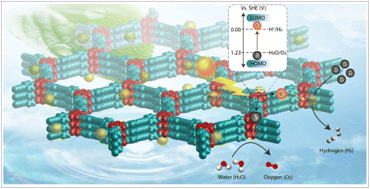
J. Mater. Chem. A, 2023,11, 14489-14538
https://doi.org/10.1039/D3TA02189K
Research progress on modified Zn substrates in stabilizing zinc anodes
This review presents a systematic overview of modified Zn substrates in stabilizing zinc anodes, mainly focusing on three aspects: (1) treatment of the zinc foil surface; (2) reconstruction of the zinc foil structure; (3) reconstruction of the zinc powder structure.

J. Mater. Chem. A, 2023,11, 14568-14585
https://doi.org/10.1039/D3TA02462H
Redox-active oxygen in oxides: emergent applications, including field-induced resistive switching, flash luminescence, p–n junctions and high capacity battery cathodes
Oxide ions are traditionally regarded as forming the inert anion sub-lattice of oxide structures whose properties are largely dominated by the cations present.

J. Mater. Chem. A, 2023,11, 12681-12694
https://doi.org/10.1039/D3TA00202K
Recent progress in functional two-dimensional photovoltaic photodetectors and related emerging applications
The photovoltaic effect can directly harvest solar energy by converting optical signals into current without external bias, and thus is a practical and sustainable approach for low-power, high-linearity, and gate-switchable optoelectronic devices.

J. Mater. Chem. A, 2023,11, 11548-11571
https://doi.org/10.1039/D3TA00950E
Constant-potential molecular dynamics simulation and its application in rechargeable batteries
Molecular dynamics reveals structures, properties, and reactions at battery interfaces on the atomic scale. Imposing a constant electrode potential in the simulation brings the model one step closer to physical reality and battery working conditions.
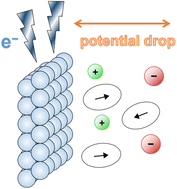
J. Mater. Chem. A, 2023,11, 11078-11088
https://doi.org/10.1039/D3TA01411H
Neutron and muon characterisation techniques for battery materials
Neutron and muon characterisation techniques offer unique capabilities for investigating the complex structure and dynamics of rechargeable battery systems.
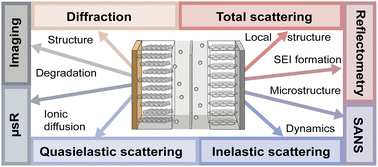
J. Mater. Chem. A, 2023,11, 10493-10531
https://doi.org/10.1039/D2TA07235A
CdS based 3D nano/micro-architectures: formation mechanism, tailoring of visible light activities and emerging applications in photocatalytic H2 production, CO2 reduction and organic pollutant degradation
CdS-based 3D nano/micro-architectures, their formation mechanism and tailoring of properties for visible light induced photocatalytic activities in energy and environmental applications are presented.

J. Mater. Chem. A, 2023,11, 10015-10064
https://doi.org/10.1039/D3TA00396E
Metal sulfide-based nanomaterials for electrochemical CO2 reduction
This review provides a comprehensive overview of various advanced modification strategies of metal-sulfide based nanomaterials for electrochemical CO2 reduction to valuable products.

J. Mater. Chem. A, 2023,11, 9300-9332
https://doi.org/10.1039/D2TA08209H
Advances in sensing mechanisms and micro/nanostructured sensing layers for surface acoustic wave-based gas sensors
Surface acoustic wave (SAW) technology has been extensively used in communications and sensing applications. This review summarizes the recent advancement of micro- and nanostructured sensing materials in enhancing the gas sensing performance of SAW devices.

J. Mater. Chem. A, 2023,11, 9216-9238
https://doi.org/10.1039/D2TA10014B
Recent progress and perspectives on cation disordered rock-salt material for advanced Li-ion batteries
Over the past decades, the utilization of Li-ion batteries has provided the benefits of high energy and power density and can be used in a variety of applications, including electric vehicles, large-scale energy storage, and the power grid.

J. Mater. Chem. A, 2023,11, 8426-8452
https://doi.org/10.1039/D3TA00852E
Mechanistic insights into the influence of surface ligands on quantum dots for photocatalysis
Quantum dots are promising semiconductor nanocrystals in the field of photocatalysis, and their surface ligands play an important role on the overall photocatalytic performance in many aspects.
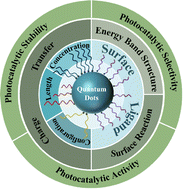
J. Mater. Chem. A, 2023,11, 8497-8514
https://doi.org/10.1039/D2TA09293J
Interphases in aqueous rechargeable zinc metal batteries
The review describes the progress of research on the aqueous interphases within rechargeable zinc metal batteries.

J. Mater. Chem. A, 2023,11, 8470-8496
https://doi.org/10.1039/D3TA00254C
Recent advances in interfacial solar vapor generation: clean water production and beyond
This review summarizes the recent progress in interfacial solar vapor generation, which was first proposed in 2014. The technique shows great potential for decentralized desalination applications using ubiquitous and renewable solar energy.
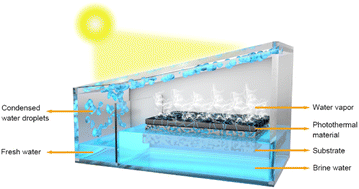
J. Mater. Chem. A, 2023,11, 5978-6015
https://doi.org/10.1039/D2TA10083E
Recent advancements of metal–organic frameworks in sensing platforms: relevance in the welfare of the environment and the medical sciences with regard to cancer and SARS-CoV-2
The present review covers metal–organic frameworks with its interesting chemical and photophysical properties that have been explored towards environmental as well as human health protection.
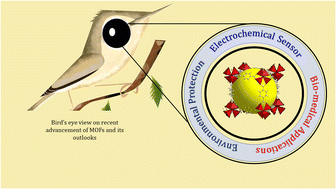
J. Mater. Chem. A, 2023,11, 6090-6128
https://doi.org/10.1039/D2TA07938K
Visibly transparent supercapacitors
Transparent supercapacitors hold great promise for futuristic electronics. This review discusses about the choice of electrode materials for achieving desirable transparency in supercapacitors without sacrificing the energy storage capacity.

J. Mater. Chem. A, 2023,11, 4907-4936
https://doi.org/10.1039/D2TA07836H
Fuel cell electrode degradation followed by identical location transmission electron microscopy
Identical location transmission electron microscopy has been used to follow degradation at the top of the catalytic Pt/C layer in a real proton exchange membrane fuel cell on the atomic scale under operation.

J. Mater. Chem. A, 2023,11, 21029-21035
https://doi.org/10.1039/D3TA01303K
Supramolecular reinforcement drastically enhances thermal conductivity of interpenetrated covalent organic frameworks
Interpenetration of covalent organic frameworks can lead to drastic enhancements in their thermal conductivities, thus marking a novel regime of materials design combining high porosities with mechanical flexibilities and high thermal conductivities.

J. Mater. Chem. A, 2023,11, 18660-18667
https://doi.org/10.1039/D3TA04161A
Interfacial assembly of a durable superhydrophobic polyurethane sponge with “scalelike” structures for efficient oily emulsion separation
A durable superhydrophobic/superlipophilic polyurethane sponge with “scalelike” pore structures was synthesized by interfacial assembly via in situ anchoring of SiO2 and H-CNTs accompanied by the bonding effect and active sites from polydopamine.

J. Mater. Chem. A, 2023,11, 18081-18088
https://doi.org/10.1039/D3TA02939E
Additive manufacturing of high-performance polycyanurates via photo-induced catalytic poly-trimerization
Investigation of a cyanate ester based formulation and stereolithography-based additive manufacturing via Hot Lithography to produce polycyanurates with a glass transition temperature of 336 °C without any additives.

J. Mater. Chem. A, 2023,11, 10545-10550
https://doi.org/10.1039/D3TA01264F
Grafting self-immolative poly(benzyl ether)s toward sustainable adhesive thermosets with reversible bonding and triggered de-bonding capabilities
A pinch of self-immolative grafts in soft matrices causes functional adhesives that are not only re-bondable but de-bondable in response to specific triggers.
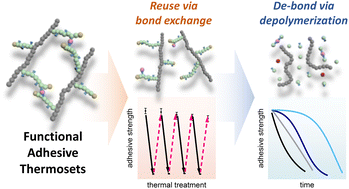
J. Mater. Chem. A, 2023,11, 10538-10544
https://doi.org/10.1039/D3TA01697H
A Cu-based Cu8−xGe(S, Te)6 argyrodite: its widespan cubic-phase region and ultralow lattice thermal conductivity
This work discloses a newly-discovered Cu8−xGe(S, Te)6 argyrodite stabilizing in a high-symmetry cubic phase in the entire low-to-mid temperature region (250–700 K).

J. Mater. Chem. A, 2023,11, 10532-10537
https://doi.org/10.1039/D3TA01476B
A polythiourea protective layer for stable lithium metal anodes
A stable polythiourea-based organic–inorganic composite film was constructed to form Li3N, Li2S, and LiF in situ at the LMA, endowing excellent stability to Ni-rich Li‖LiNi0.88Co0.09Mn0.03O2 (NCM88) cells.

J. Mater. Chem. A, 2023,11, 10155-10163
https://doi.org/10.1039/D3TA01343J
Dynamic molecular tunnel junctions based on self-assembled monolayers for high tunneling current triboelectricity generation
Here, we show a novel energy conversion design with a dynamic MIM structure. This is realized though grafting CF3 group which shows high tunnelling current density of up to 7.6 × 106 Am−2. This can further fulfill the macroscopic energy harvesting.

J. Mater. Chem. A, 2023,11, 4946-4956
https://doi.org/10.1039/D2TA10048G
Unveiling the structure and ion dynamics of amorphous Na3−xOHxCl antiperovskite electrolytes by first-principles molecular dynamics
Amorphous antiperovskites show potential as solid-state electrolytes due to their versatile properties. Using first-principles molecular dynamics, we reveal the Na3−xOHxCl system's structural complexities, Na ion dynamics, H atom role, and ionic conductivity mechanisms.

J. Mater. Chem. A, 2023,11, 22922-22940
https://doi.org/10.1039/D3TA01373A
Molecular dynamics interpretation of hydrogen bonds for colorless, water-resistant, tough, and self-healable elastomers
A new molecular dynamics for transparent and self-healing elastomers are developed that uses aliphatic disulfide and H-bond acceptors to produce colorless and waterproof coatings, particularly in display applications.

J. Mater. Chem. A, 2023,11, 22737-22748
https://doi.org/10.1039/D3TA03811D
In situ formed copper nanoparticles via strong electronic interaction with organic skeleton for pH-universal electrocatalytic CO2 reduction
Electrochemical CO2 reduction reaction (CO2RR) has mainly been implemented in alkaline and neutral electrolytes. In this work, we report an in situ formed novel organic/inorganic copper hybrid catalyst, which is an efficient catalyst for CO2RR in pH-universal electrolytes.

J. Mater. Chem. A, 2023,11, 22992-23000
https://doi.org/10.1039/D3TA03009A
Investigation of high-entropy Prussian blue analog as cathode material for aqueous sodium-ion batteries
Aqueous rechargeable sodium-ion batteries (ARSIBs) have received considerable attention as promising alternatives to lithium-ion batteries (LIBs) owing to their safety, environmental friendliness, low cost, and high charge/discharge capacities.

J. Mater. Chem. A, 2023,11, 22835-22844
https://doi.org/10.1039/D3TA04349E
Emergent ionic conduction in aliovalently-doped fast ion conductors
Studying diverse cation arrangements in yttria doped zirconia reveals connections between microscopic factors and the overall ionic conductivity.

J. Mater. Chem. A, 2023,11, 22760-22768
https://doi.org/10.1039/D3TA03896C
Novel side chain functionalized polystyrene/O-PBI blends with high alkaline stability for anion exchange membrane water electrolysis (AEMWE)
A new material comprising a functionalized polystyrene and O-PBI showing excellent stability and performance in anion exchange membrane water electrolysis is introduced.
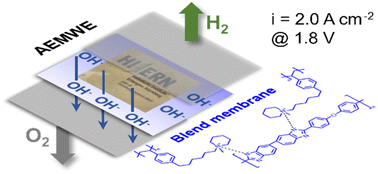
J. Mater. Chem. A, 2023,11, 22347-22359
https://doi.org/10.1039/D3TA02978F
Self-doped p–n junctions with high carrier concentration in 2D GaN/MoSSe heterostructures: a first-principles study
A nonvolatile self-doping strategy through fabricating two different 2D polar semiconductors (GaN/MoSSe) into vdW heterostructures could theoretically achieve high concentrations of carriers (>3.48 × 1012).

J. Mater. Chem. A, 2023,11, 22360-22370
https://doi.org/10.1039/D3TA04322C
Structure and thermal property relationships in the thermomaterial di-n-butylammonium tetrafluoroborate for multipurpose cooling and cold-storage
The innovative [DBA][BF4] thermomaterial exhibits advanced thermal properties for multipurpose active barocaloric refrigeration and passive cold-storage of interest for commercial food preservation.

J. Mater. Chem. A, 2023,11, 22232-22247
https://doi.org/10.1039/D3TA04063A
Acid-inducing {110}/{121} facet junction formation boosting the selectivity and activity of CO2 photoreduction by BaTiO3 nanoparticles
With the introduction of {110} facets and an increasing exposure ratio, the photoreduction CO2 reaction of acid-etched BaTiO3 occurs on different facets of BaTiO3, and the corresponding reactants/products and photocatalytic mechanism are presented.

J. Mater. Chem. A, 2023,11, 21746-21753
https://doi.org/10.1039/D3TA04382G
Cation-induced speciation of port-size during mordenite zeolite synthesis
Varying the inorganic cation in the synthesis of MOR zeolite results in crystalline material of varying port-size, ascertained by gaseous uptake of toluene. Al siting is found to be the cause of this and differences on catalytic behavior follow.

J. Mater. Chem. A, 2023,11, 21884-21894
https://doi.org/10.1039/D3TA03444E
Multi-objective collaborative design optimized highly efficient energy capacitive lead-free relaxor ferroelectrics
Highly efficient capacitive ESP with a high Wrec (6.82 J cm−3) and η (90%), concurrent with an ultrahigh Wrec/Eb of ∼0.01624 μC cm−2, as well as superior stability and charge/discharge performance are gained via multi-objective collaboration design.

J. Mater. Chem. A, 2023,11, 21948-21958
https://doi.org/10.1039/D3TA03946C
1D transition-metal dichalcogenides/carbon core–shell composites for the hydrogen evolution reaction
2D transition metal dichalcogenides (TMDCs) have recently been proposed as an excellent catalytic substitute for noble metals in the hydrogen evolution reaction (HER).

J. Mater. Chem. A, 2023,11, 21806-21816
https://doi.org/10.1039/D3TA04416E
Sulphur vacancy driven phase conversion of MoS2 nanosheets for efficient photoreduction of CO2 under visible light
Here, we have shown the sulphur vacancy induced phase conversion of MoS2 from the 2H to the 1T′ phase. The as-synthesized mixed phase MoS2 catalyst has been utilized for the photocatalytic CO2 reduction reaction.

J. Mater. Chem. A, 2023,11, 21721-21734
https://doi.org/10.1039/D3TA03788F
Molten salt-directed synthesis of strontium manganese perovskite oxide: an active electrocatalyst for the oxygen reduction reaction and oxygen evolution reaction
We report a molten-salt pathway for the synthesis of strontium manganese perovskite oxide (SMO), its phase transition with the variation of temperature and demonstrate the intrinsic catalytic behaviour of different phases towards the ORR and OER.

J. Mater. Chem. A, 2023,11, 21780-21792
https://doi.org/10.1039/D3TA03808D
Internal electric fields in asymmetric single-layer lattices for enhancing photocatalytic solar-to-hydrogen efficiency
MSi2N3Y monolayers are proposed as a promising candidate for overall water splitting with high solar-to-hydrogen efficiency.

J. Mater. Chem. A, 2023,11, 21713-21720
https://doi.org/10.1039/D3TA03824F
Plasmonic polymer nanoantenna arrays for electrically tunable and electrode-free metasurfaces
Electrically tunable and electrode-free metasurfaces using plasmonic polymer inverted nanoantenna arrays can operate across the entire spectral range of the material, including the mid-infrared region.
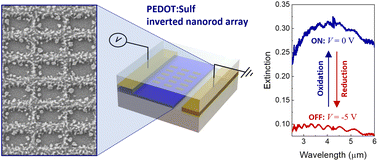
J. Mater. Chem. A, 2023,11, 21569-21576
https://doi.org/10.1039/D3TA03383J
On the quantification of hydrogen in lithium metal oxides
This article presents different hydrogen sensitive methods to determine the bulk hydrogen content in LiMO3 (M = Nb, Ta).

J. Mater. Chem. A, 2023,11, 21183-21202
https://doi.org/10.1039/D3TA03317A
Direct observations of electrochemically induced intergranular cracking in polycrystalline NMC811 particles
Establishing the nature of crack generation, formation, and propagation is paramount to understanding the degradation modes that govern decline in battery performance.

J. Mater. Chem. A, 2023,11, 21322-21332
https://doi.org/10.1039/D3TA03057A
Multipoint-bridging structure with a piezoelectricity-induced S-scheme junction for piezoelectricity-enhanced photoelectrochemical H2O2 production
A novel photoanode is prepared by bridging a vertical p-type CdS nanowire array by transverse Au nanorods for piezoelectricity (PE)-enhanced photoelectrochemical H2O2 production, and a new concept of PE-induced S-scheme junctions is proposed.

J. Mater. Chem. A, 2023,11, 21393-21400
https://doi.org/10.1039/D3TA03709F
Guest-induced breathing mediated selective alcohol recovery from water by MIL-88A(Fe)
Guest-induced breathing mediated selective alcohol adsorption.
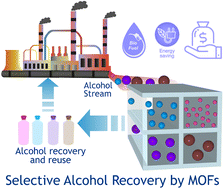
J. Mater. Chem. A, 2023,11, 21300-21311
https://doi.org/10.1039/D3TA04110G
Boosting the performance of reversible solid oxide electrochemical cells with a novel hybrid oxygen electrode, Pr1.39Ba0.14Sr0.53Co1.48Fe0.76O6−δ-Ba0.66Sr0.34CoO3−δ
Solid oxide electrochemical cells (SOECs) are a promising clean energy technology with the great potential to drive the transition to a sustainable and low-carbon energy future.
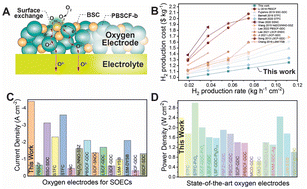
J. Mater. Chem. A, 2023,11, 21251-21262
https://doi.org/10.1039/D3TA03629D
Holmium rare earth metal ion incorporated and ambient-air processed all-inorganic γ-CsPbI2.5Br0.5 perovskite solar cells yielding high efficiency and stable performance
Ambient-air processed highly efficient inorganic perovskite solar cells with holmium rare earth metal ion incorporated γ-CsPbI2.5Br0.5-based perovskite surpassing 19% power conversion efficiency with improved stability.

J. Mater. Chem. A, 2023,11, 21312-21321
https://doi.org/10.1039/D3TA03042C
Coexistence of superconductivity and electride states in Ca2H with an antifluorite-type motif under compression
An unprecedented hydride Ca2H with an antifluorite-type structure is predicted to possess the coexistence of electride states and superconductivity under pressure. This study paves the way for the search of novel electride superconductor hydrides.

J. Mater. Chem. A, 2023,11, 21345-21353
https://doi.org/10.1039/D3TA04418A
Enhancing the selective electrochemical conversion of nitrate via π back-donation on Lewis acid sites induced by noble-metal doped CoP
Nitrate is a typical Lewis base, while noble-metals have unoccupied d-orbitals that can form Lewis acidic sites. Therefore, Pd/CoP can utilize Lewis acid–base interactions to promote the adsorption and conversion of NO3−.

J. Mater. Chem. A, 2023,11, 21161-21169
https://doi.org/10.1039/D3TA04044E
Waterbed inspired stress relaxation strategies of patterned silicon anodes for fast-charging and longevity of lithium microbatteries
Our pattern strategy draws inspiration from the structure of “waterbeds”, achieving stress relaxation, thereby enabling fast-charging capabilities and ensuring the longevity of lithium microbatteries.

J. Mater. Chem. A, 2023,11, 21211-21221
https://doi.org/10.1039/D3TA03968D
Efficient photoelectrocatalytic CO2 reduction to CH3OH via porous g-C3N4 nanosheets modified with cobalt phthalocyanine in ionic liquids
Photocatalytic CO2 reduction into fuels is desirable; however, realizing efficient CnH2n+1OH (n = 1, 2) synthesis that involves multielectron-coupled proton transfer alongside C–C bond formation remains a challenge.

J. Mater. Chem. A, 2023,11, 21078-21088
https://doi.org/10.1039/D3TA03285J
Reinforcement learning-based design of shape-changing metamaterials
We have implemented a new reinforcement learning method able to rationally design unique metamaterial structures, which change shape during operational conditions. We have applied this to design nanostructured silicon anodes for Li-ion batteries.

J. Mater. Chem. A, 2023,11, 21036-21045
https://doi.org/10.1039/D3TA03119E
Revealing the role of aniline in assisting SnO2 electrocatalytic CO2 reduction to HCOOH: via the perspective of the reaction pathway
Grafted aniline formed an innovative carbamate intermediate (NHCOO*) with CO2 during catalyzing CO2ER to generate HCOOH, thus reducing the reaction energy barrier and accelerating the reaction kinetics of the rate-controlling step.

J. Mater. Chem. A, 2023,11, 20796-20807
https://doi.org/10.1039/D3TA04368A
Combining in situ electrochemistry, operando XRD & Raman spectroscopy, and density functional theory to investigate the fundamentals of Li2CO3 formation in supercapacitors
This study combines operando XRD & Raman spectroscopy and DFT simulation to reveal how Li2CO3 formation and reversibility may contribute to energy storage in supercapacitors.

J. Mater. Chem. A, 2023,11, 20636-20650
https://doi.org/10.1039/D3TA02182C
Probing the effect of metal to ligand charge transfer on the oxygen evolution reaction in Au incorporated Co(OH)2 thin film electrocatalysts
Incorporating Au in small amounts reduces the metal-to-ligand charge transfer effect in Co(OH)2 electrocatalysts during the OER that aids the nucleophilic attack of OH− ions on adsorbed oxygen, easing its desorption from the catalyst surface.

J. Mater. Chem. A, 2023,11, 20816-20823
https://doi.org/10.1039/D3TA03923D
Solvent-free preparation of imine vitrimers: leveraging benzoxazine crosslinking for melt processability and tunable mechanical performance
Orthogonal benzoxazine crosslinking enables the solvent-free preparation of dynamic imine vitrimers with tailorable thermomechanical performance, efficient reprocessability, and chemical degradation.
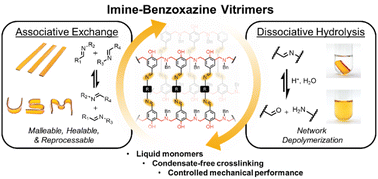
J. Mater. Chem. A, 2023,11, 20568-20582
https://doi.org/10.1039/D3TA04351G
About this collection
2023 marked the 10th anniversary year of the Journal of Materials Chemistry A, B and C. To celebrate, we have highlighted some of the authors who have published for the first time in these journals during the anniversary year.
This collection showcases a selection of articles that have been published by corresponding authors for the first time in Journal of Materials Chemistry A in 2023.
Thank you to these authors for choosing to publish with the journal!
Check out these companion collections: